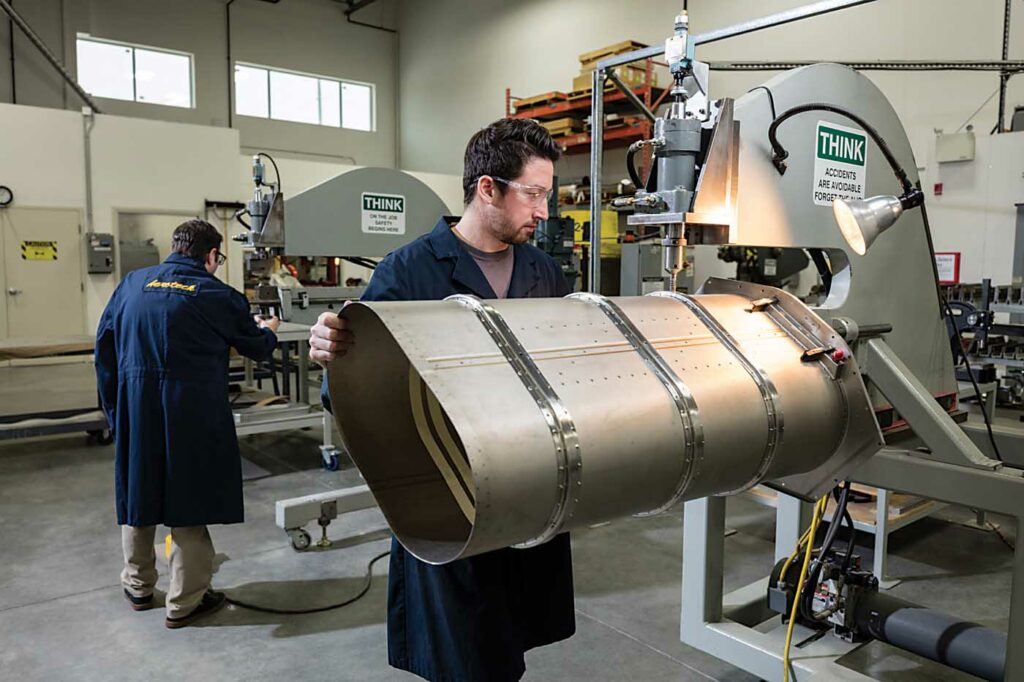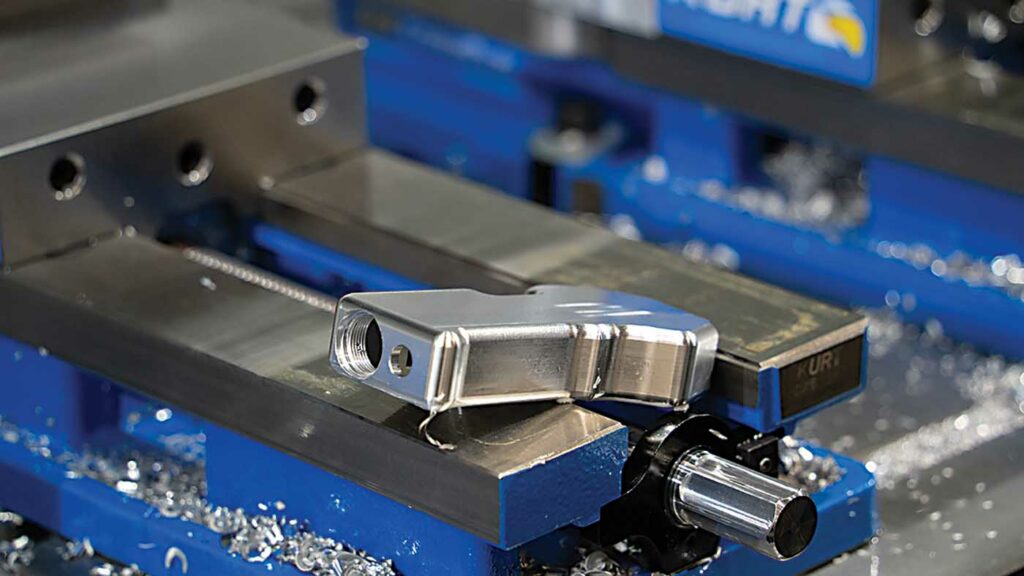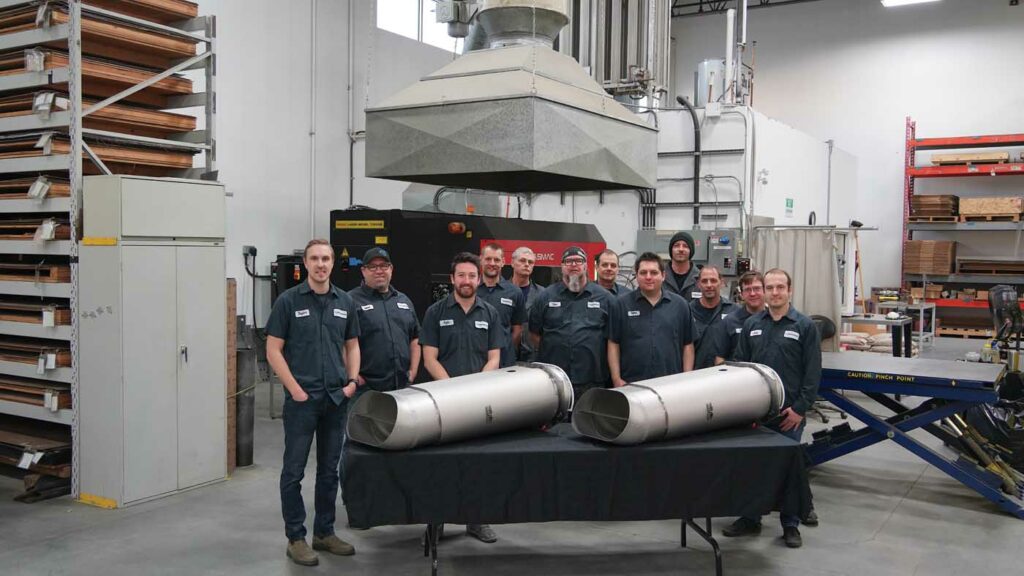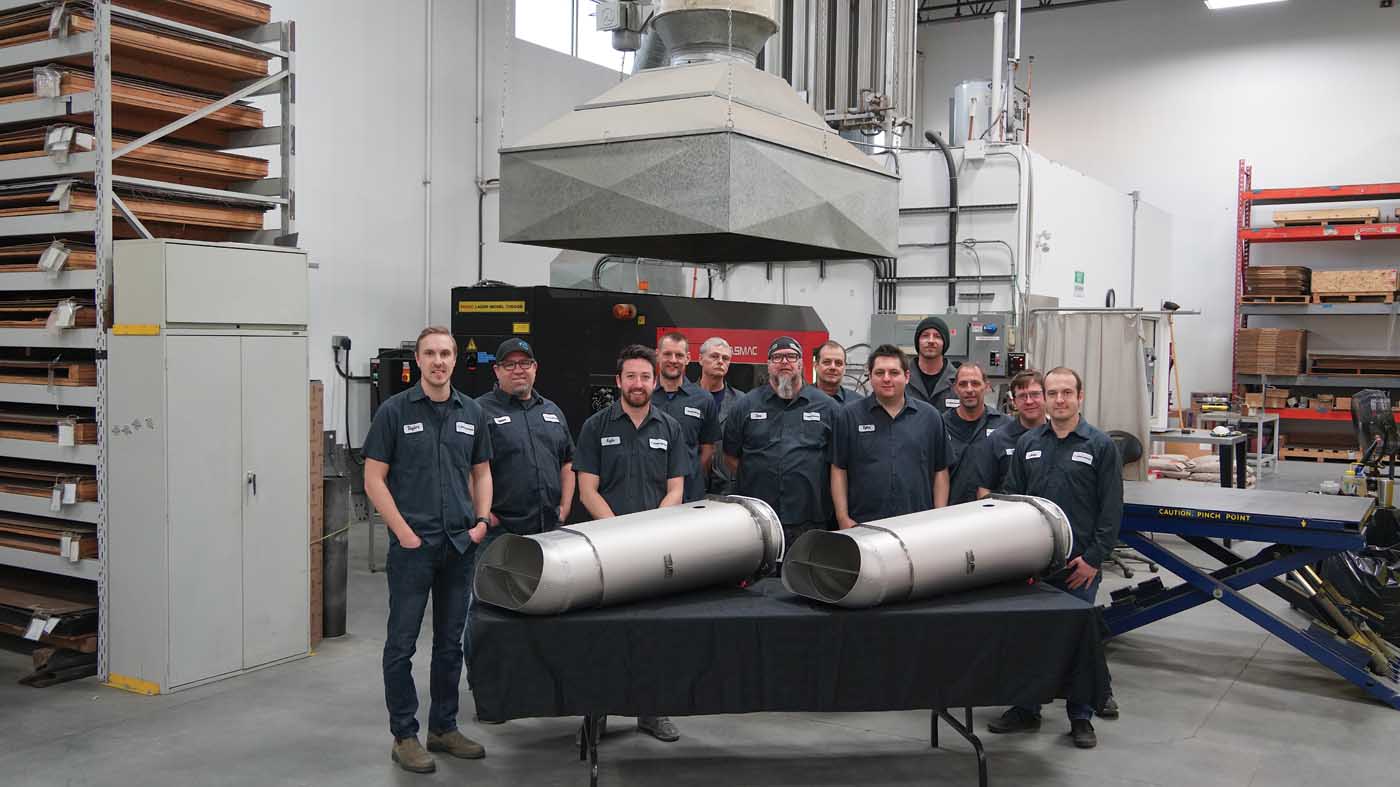It’s been more than 30 years since Alpine Aerotech opened the doors of its helicopter maintenance, repair, and overhaul (MRO) facility in Kelowna, British Columbia.
Now, home to its team of more than 140 employees, the company boasts one of the largest MRO and parts distribution facilities in North America.
Aerotech continues to build on its industry-wide reputation as the “go-to” shop for work on Bell’s venerable medium machines — the workhorse 212 and 412 series of helicopters.
Leveraging its engineering, design and manufacturing expertise, the company has developed a slate of supplemental type certificates (STCs) that can enhance its clients’ helicopter operations.

“Many of our STC products have been derived from our own internal maintenance experience,” said Taylor Wilson, Aerotech’s manufacturing manager. “We rely on the analytics and knowledge from our MRO side when developing a product or approved repair.”
Simon Konte, a design engineer with two decades of experience at Aerotech, expanded on the company’s STC process and said, “If we see a part constantly coming through the door for repair, or if the guys on the floor are seeing ongoing maintenance issues, then that’s a red flag for us.
“That can give us an idea for an STC, which will go to market research and cost benefit analysis,” Konte continued. “We then determine the ease of manufacturing and maintenance to make sure it would be an improvement for the operator. We don’t want to design something that’s a maintenance burden or too expensive for the operator to implement.”
Aerotech’s first STC was a redesign of the Bell 212 exhaust system, an outer heat shield jacket mounted on the outside of the exhaust ejector. Held in place with “hundreds of rivets,” the part had become a maintenance headache.

“Our STC replaced that with a floating jacket held on by just a few screws and a series of band clamps,” Konte said. “It makes inspections and maintenance really quick and easy. We also developed the exhaust deflector that directs hot exhaust away from the tailboom, reducing the temperature on critical components.”
That update led to Aerotech’s most successful STC, an improved configuration for the Bell 212’s exhaust ejector/deflector.
Meeting the goal of increasing the durability and repairability of the exhaust system, the STC not only became popular as a retrofit, but original equipment manufacturer (OEM) Bell asked Aerotech to supply the components of the design for its new production aircraft.
“Our part number is in the Bell IPB [illustrated parts breakdown] and is on every 412 that comes out of Bell and Subaru,” Wilson said.

Aerotech has dozens of operational STCs covering everything from the 212/412 exhaust system to Bell and Airbus panel protection, deep snow bear paw kits, and 3D printed ducting and headset hangers. Recently, the company has focused on advanced avionics and glass cockpit upgrades.
“We’re seeing a shift toward those kinds of projects,” Wilson said. “There are new requirements driven by regulators, and if that capability is required by an operator’s contract, they’re going to need to source and install these STCs.”
Aerotech works hard to maintain its relationship with the regulatory community, while recognizing that level of scrutiny of the aviation sector has increased.
“Transport Canada sets a high standard in terms of the worldwide certification requirements. And the regulators have a lot of faith and trust in what we have been able to produce in the past,” Wilson said.
Depending on the complexity of a design, Aerotech’s timeline from STC idea to regulatory approval has ranged from a few months to a year.
Most recently, a Bell 212/412 STC was approved by Transport Canada for the installation of Astronautics RoadRunner Electronic Flight Instrument System (EFIS) — with approvals in the works from other global regulators.
This system adds instrument flight rules (IFR) capabilities to Aerotech’s extensive avionics upgrades for the Bell mediums that replaces the original electro-mechanical flight instruments with a fully electronic suite of sensors and displays. It also integrates with existing ADS-B, TAS/TCAS I, and radar altimeter STCs.

Over the years, Aerotech has delivered thousands of STC kits, all including detailed documentation and installation instructions.
“The STC part of the business has really grown organically. A lot of what goes into the pipeline is based on our own experience and what we’ve experienced out in the field working on the helicopters,” said Alfonso Garcia, vice president of sales. “And we see it continuing to grow as we begin working with new aircraft types from OEMs, including Leonardo and Airbus. It’s clear that it will grow side-by-side with the maintenance part of our business.”
As a small but important part of Aerotech, the STC and product development division prides itself on having a direct line of communication with its customers.
“We’re very familiar with every product that comes out the door, so if someone picks up the phone and calls asking for maintenance help, assistance to install an STC kit, or general technical information about a product, we can typically answer those questions right then and there,” Taylor said. “That’s what our customers have come to expect.”









